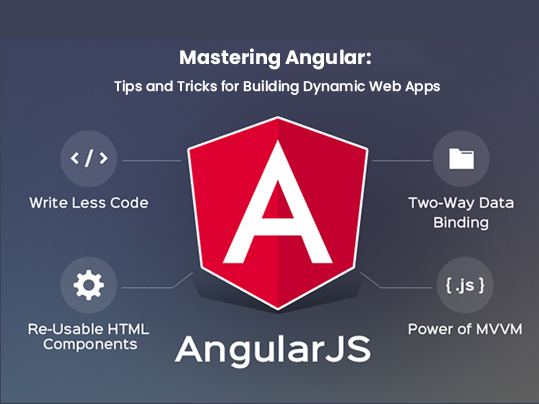Tips and tricks to help you master Angular
In the fast-paced world of web development, staying up-to-date with the latest tools and technologies is essential to create dynamic and responsive web applications. One such tool that has gained immense popularity among developers is Angular. In this blog post, we’ll explore some valuable tips and tricks to help you master Angular and build exceptional web apps.
Why Angular?
Before we dive into the tips and tricks, let’s quickly recap why Angular is a go-to choice for many developers. Angular is a powerful JavaScript framework maintained by Google that enables the creation of single-page applications (SPAs) and dynamic web applications. It provides a robust architecture, a rich set of features, and a thriving community, making it an excellent choice for building modern web applications.
Tip #1: Understanding Angular’s Architecture
- To truly master Angular, you must first understand its architecture. Angular is built around components, which are the building blocks of your application.
- Each component consists of HTML templates, TypeScript code, and CSS styles. Understanding how to structure and manage these components is crucial.
- Be sure to grasp concepts like modules, services, and dependency injection, as they are fundamental to Angular development.
Tip #2: Embrace Reactive Programming
- Angular leverages reactive programming with RxJS, a library for handling asynchronous operations.
- To master Angular, become proficient in using observables, subjects, and operators provided by RxJS.
- Reactive programming enables you to manage data flow in a more efficient and predictable manner, which is essential for building dynamic applications.
Tip #3: Leverage Angular CLI
- Angular CLI (Command Line Interface) is a powerful tool that simplifies the development process.
- It automates tasks like project setup, component generation, testing, and deployment.
- Familiarize yourself with Angular CLI commands, as they can save you a considerable amount of time and effort during development.
Tip #4: Optimize Performance
- Web app performance is crucial for a positive user experience.
- Angular provides several tools to help optimize performance, such as Ahead-of-Time (AOT) compilation, lazy loading, and tree-shakable dependencies.
- Learn how to use these features effectively to ensure your Angular applications run smoothly and load quickly.
Tip #5: Keep Learning and Stay Updated
- The web development landscape is constantly evolving.
- To master Angular, it’s essential to keep learning and stay updated with the latest advancements and best practices.
- Join online communities, follow Angular blogs, and participate in web development conferences to expand your knowledge and network with fellow developers.
Conclusion
Angular is a powerful framework for building dynamic web applications, and mastering it can open up a world of possibilities for your development career. By understanding Angular’s architecture, embracing reactive programming, leveraging Angular CLI, optimizing performance, and staying updated with the latest trends, you’ll be well on your way to becoming an Angular expert.
At Nichetech Solution, we’re passionate about web development and can help you harness the full potential of Angular for your projects. Whether you’re a seasoned developer or just getting started, these tips and tricks will set you on the path to mastering Angular and creating outstanding web applications.







